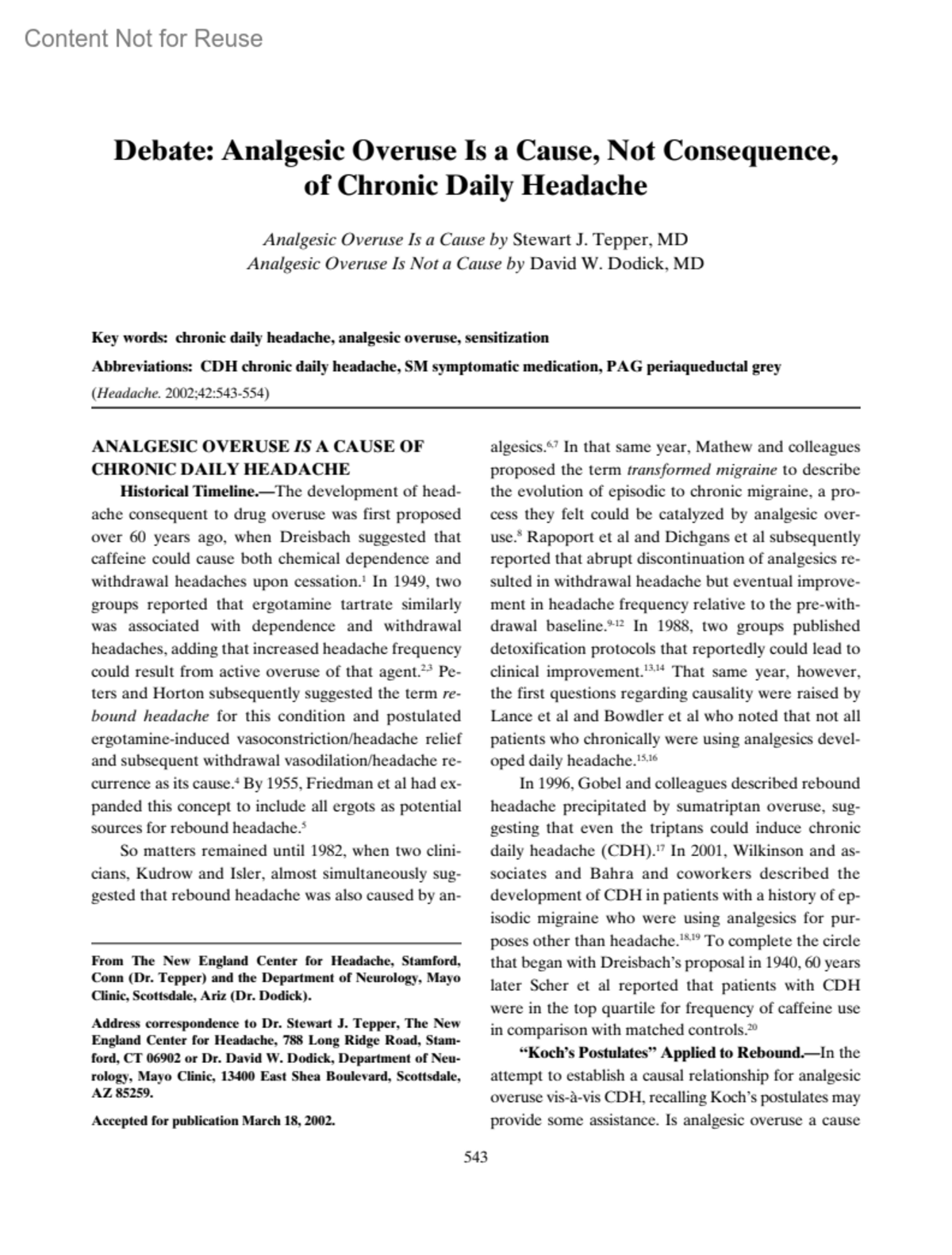ANALGESIC OVERUSE IS A CAUSE OF CHRONIC DAILY HEADACHE
- Tepper, Stewart J. MD
The New England Center for Headache, Stamford, Conn
Address correspondence to Dr. Stewart J. Tepper, The New England Center for Headache, 788 Long Ridge Road, Stamford, CT 06902 or Dr. David W. Dodick, Department of Neurology, Mayo Clinic, 13400 East Shea Boulevard, Scottsdale, AZ 85259.
Abbreviations: CHD Chronic Daily Headache, SM symptomatic medication, PAG periaqueductal greyEditor's NoteReviewing the persuasive arguments presented by Drs. Tepper and Dodick and leavening those arguments with the perspectives authored by Drs. Srikiatkhachorn and Saper, it's difficult for one to escape the conclusion that neither side is the loser in this scholarly debate. While it appears that the transformation of episodic migraine into chronic daily headache may occur spontaneously—at least in the absence of an as yet identified precipitant—it also seems clear that analgesic overuse may facilitate or even induce this process. Experimental evidence suggests that headache transformation is a clinical event that is reflecting biologic sensitization, and analgesic overuse likely represents one of the more common and potent contributors to that sensitization. Many questions remain. Are there various biochemical routes to the familiar clinical phenotype of transformed migraine? If so, must treatment be tailored accordingly, requiring a variety of therapeutic options? Can we develop “desensitization therapies” that will produce a better clinical outcome than our current treatments provide? If so, can we identify clinical or laboratory markers that will allow us to distinguish between the various subtypes of transformed migraine and so tailor therapeutic intervention accordingly? Supplying answers to these questions undoubtedly will prove to be a tall order, but these authors and the investigators they cite have provided us great service by lighting the way.
Accepted for publication March 18, 2002.

